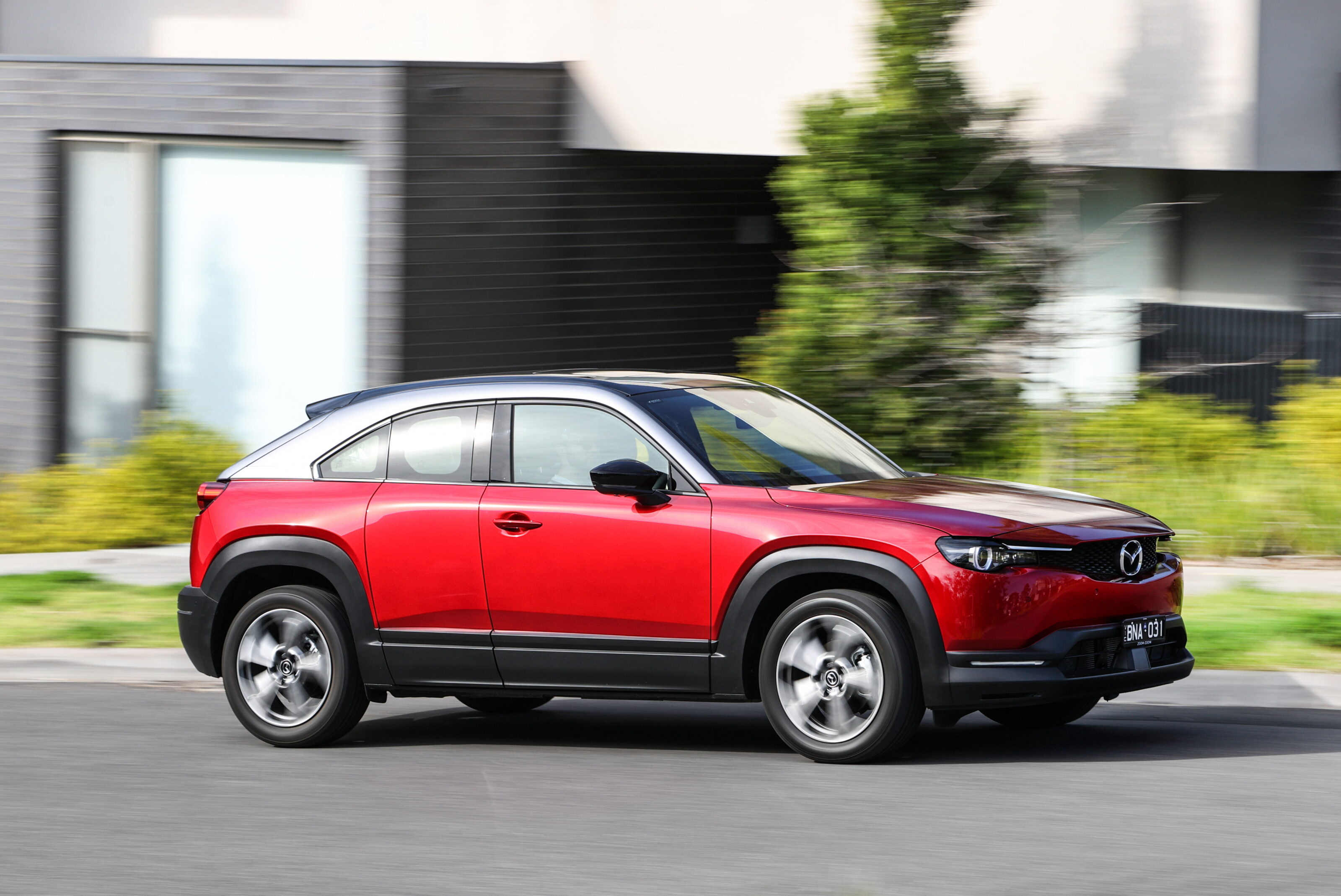Part 1: It begs to differ
Mazda MX-30 G20e (Hybrid)
Name for me, if you can, another car manufacturer that would have the audacity, in this age of model rationalisation, to spin off a compact crossover with so-called ‘freestyle’ doors? I’ll wait…
Yep, you could never accuse Mazda of inherent conservatism or lacking a ‘give it a crack’ attitude.
But does that make the MX-30 a desirable and practical alternative to the excellent CX-30? That’s what my three-month tenure aims to answer.
You’re probably aware that the MX-30’s mission in life appears to be to provide Mazda with a style-driven EV that stands out in an increasingly populous segment. Yet the MX-30 aims for broader appeal by also being offered with the 2.0-litre atmo four-pot from the more affordable end of the CX-30 range (supplemented by a mild-hybrid 24v integrated starter/generator) which is what we have here. In this one-engine, auto-only, front-drive form, MX-30 is available in three trim grades, starting at $33,990 for the G20e Evolve, and topping out with this G20e Astina at $40,990.
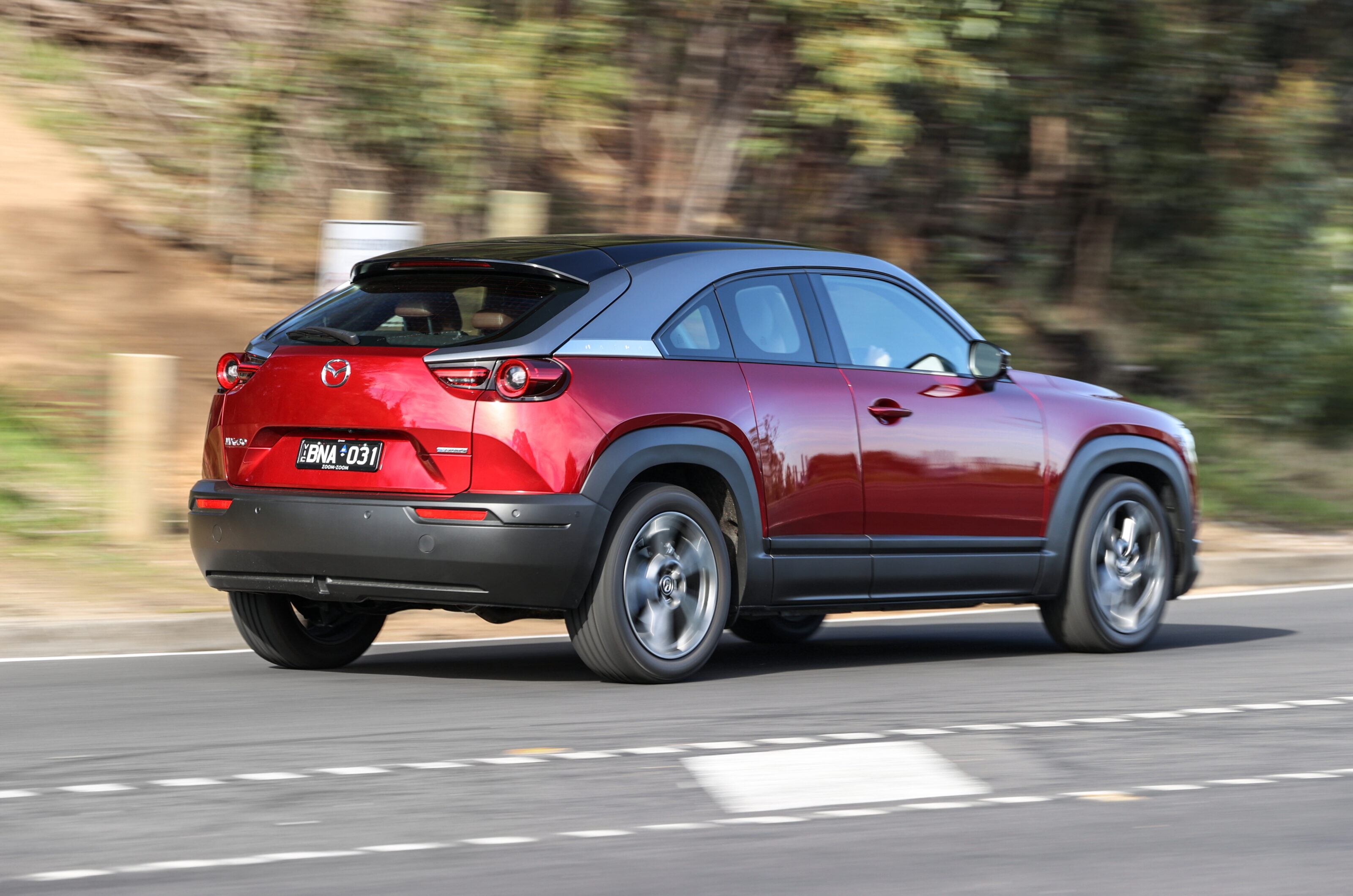
Quick value and equipment check: Astina’s tag of nearly $41K (plus on-roads) is around $4500 more than the mid-rung Touring model below, so given the engine, trans and driven wheels are identical, you’d hope for a decent whack of extra kit.
You decide: exclusive to my Astina are Vintage Brown faux-leather upholstery, sunroof, Bose audio, heated seats and steering wheel, head-up display, adaptive LED headlights, and a safety pack compromising a 360-degree-view monitor, cruising & traffic support, front cross-traffic alert and front parking sensors.
The freestyle doors are such a significant and divisive design element I’ll devote more coverage to them (and the rear-seat packaging) next month, but suffice to say they won’t suit buyers with kids who use the rear seats on a daily basis.
No, it seems the doors are very much part of a design aesthetic that sets out to deliver a coupe profile with sloping roof and pert rump. Does it work for you? Exterior design is such a subjective thing that I’m reluctant to dig too deeply into it, but overall I’m okay with the looks, rather than wildly seduced by them.
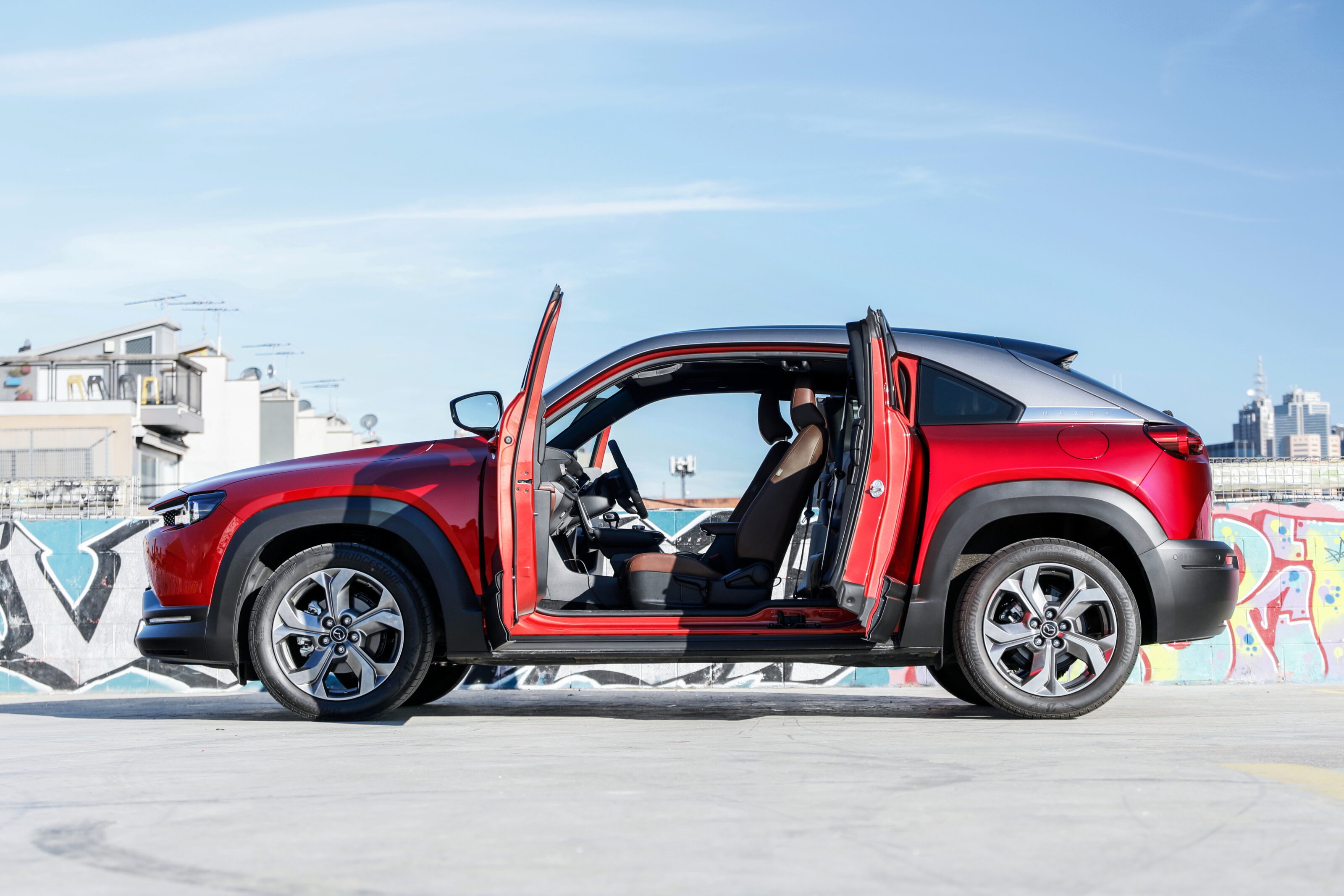
Mazda first used ‘freestyle’ rear doors on the COTY-winning RX-8 sports car of 2004. So, do they make sense here?
The Soul Red Crystal metallic paint of this example is deeper and more glossy than a supermodel’s fingernails, while the silver roof rails and black roof do make it stand out from the throngs of CX-30s. (But not cheap at $1490…)
There are some nice touches, like the Mazda name embossed into appliqués in the D-pillars, and tail-lights that house the indicators within their centres. It’s obvious that a load of design attention has been lavished on the MX-30; I just find the slightly dumpy stance and the wide black mouldings framing the lower exterior of the car temper its visual appeal. But that’s just me; far more relevant is how well it all functions and what level of driver appeal exists.
First impressions when you slide into the driver’s seat is that the cabin is a cohesive interpretation of the exterior design in that it clearly sets out to be more avant-garde and adventurous than the CX-30 with which it shares significant components. The floating console is cool, and use of cork around it is a neat nod to Mazda’s corporate origins, while the recycled material used on the door trims adds visual interest.
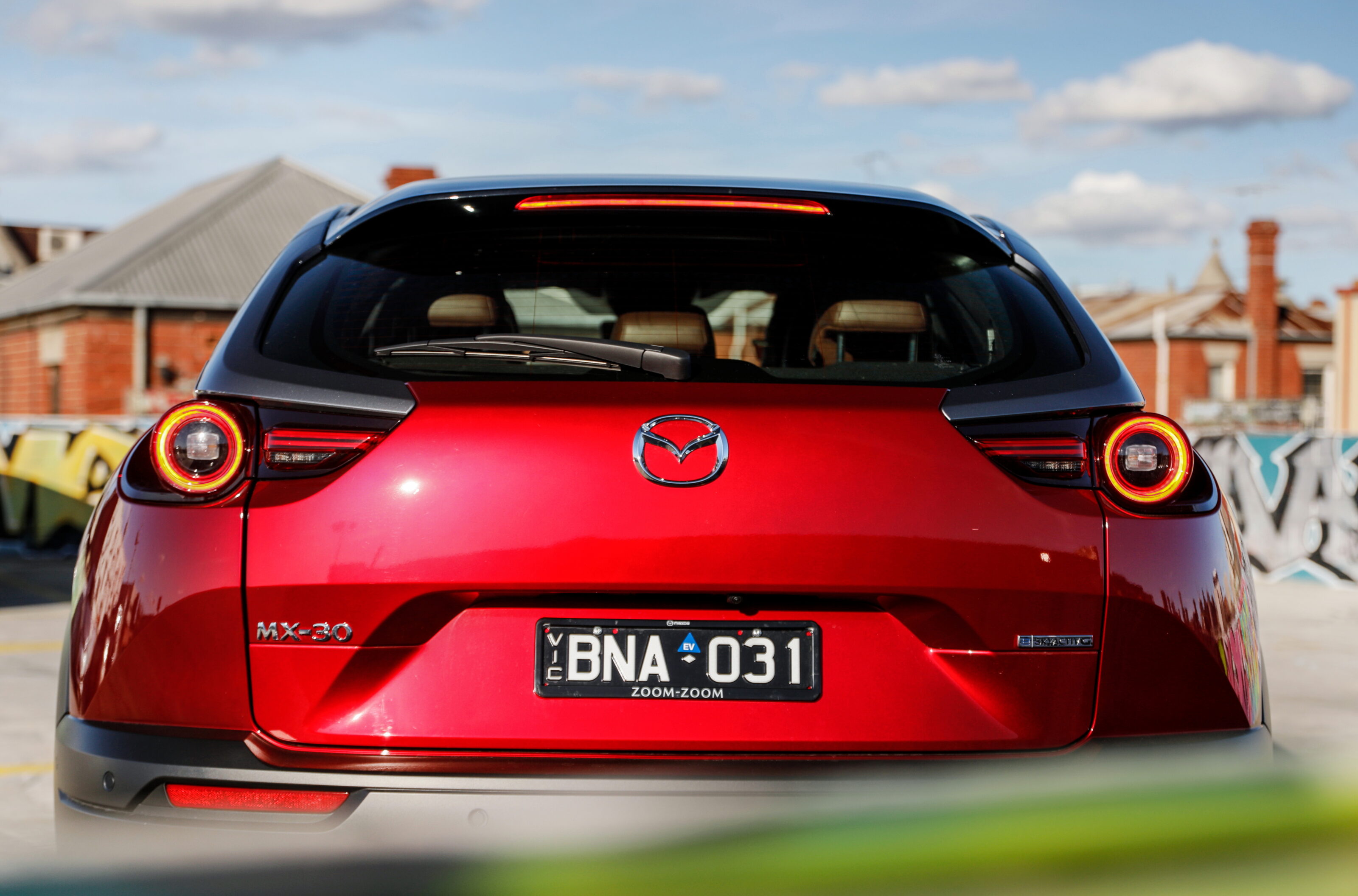
The multimedia screen seems small in this era of tablet-sized displays, but operation via the rotary controller is so far niggle-free. Lovely clarity, too, from the instrument panel, which flanks analogue gauges either side of a centre screen that can be configured to one of three views. All good stuff, leaving my main gripe directed at the front seats that are clearly not designed for an XL frame. With my 6ft/110kg dad-bod squeezed in, the driver’s seat is snug around the side bolsters and lacks under-thigh support.
Further, the design of the doors bring a blind-spot the size of a telephone directory just over your shoulder, while the wide D-pillars do rear-three-quarter vision no favours, so real care is needed when merging from acute angles.
More positive has been the set-up procedure that gives a welcome range of customisation to frequently used functions. The volume of the parking alerts and even the indicator ticking sound can be tailored to your preference, while the lane-keep assist can be properly disabled. Hurrah.
What’s most obvious, though, is the MX-30 is for those who embrace ‘different’; buyers who appreciate its adventurous design, and are happy to pay a premium for it. Not sure yet if that’s me, but I’m looking forward to finding out.
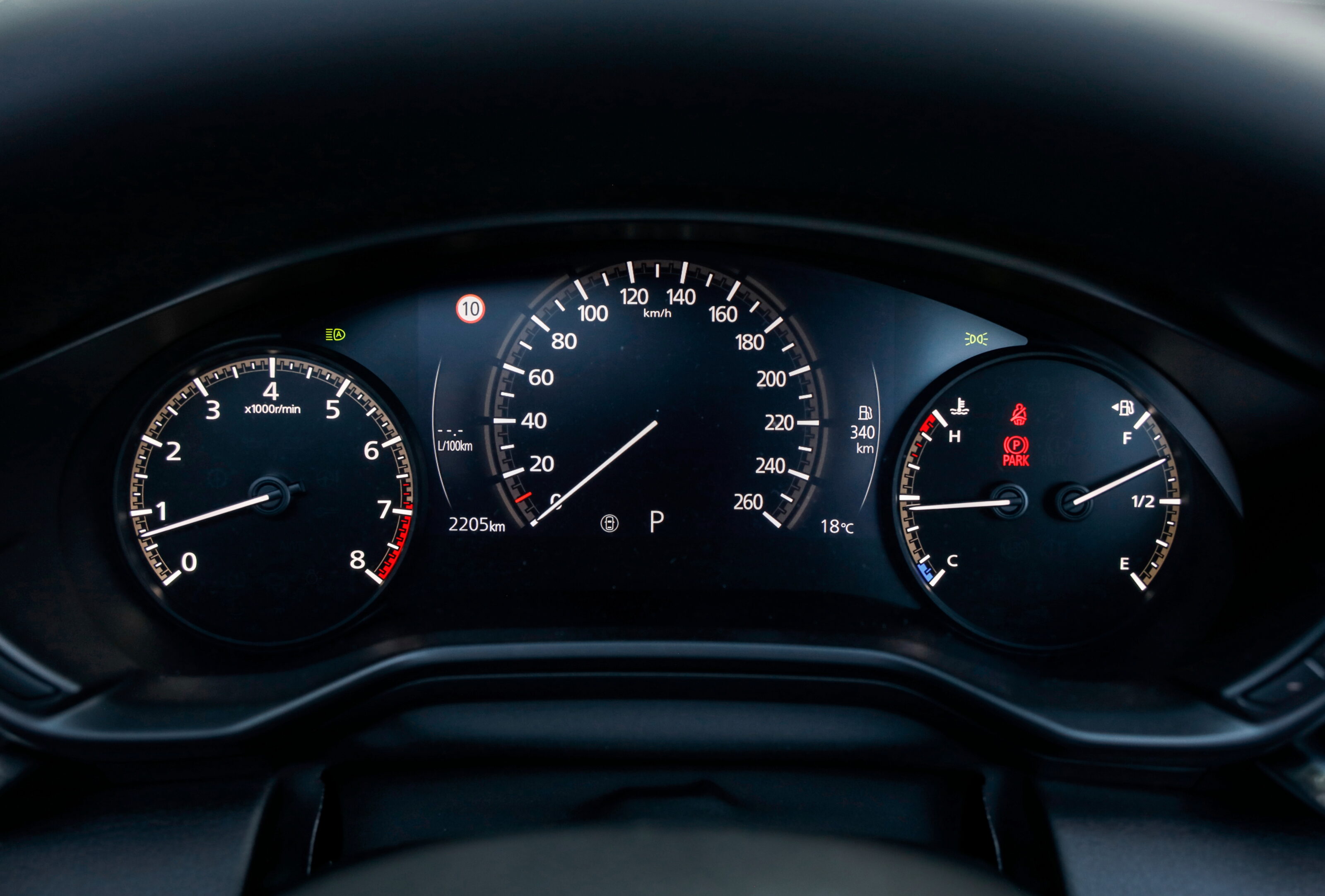
Part 2: Doors of perception
MX-30 G20e (Hybrid)
The lady walking her doe-eyed Labrador paused to ask me a simple car question, but I was momentarily (almost) too thick to realise we had a misunderstanding. “What sort of range do you get from that?” she wanted to know.
I was about to answer, “Around 500km, depending on how hard I thrash it…” when I realised where our wires had become crossed.
“Ah, you think this is an electric car, right?” I asked her. She pointed to the small, blue triangular decal on the numberplate with the letters ‘EV’, and shot back, “Isn’t it?”
I had to explain that the EV sticker is actually a warning designed to advise emergency service workers responding to a crash that the car is equipped with a battery pack that may need to be disconnected to prevent a potential fire. Any car with even a mild-hybrid system like the 24v set-up on the MX-30, with its integrated starter generator, is therefore classified as an ‘electric vehicle’.
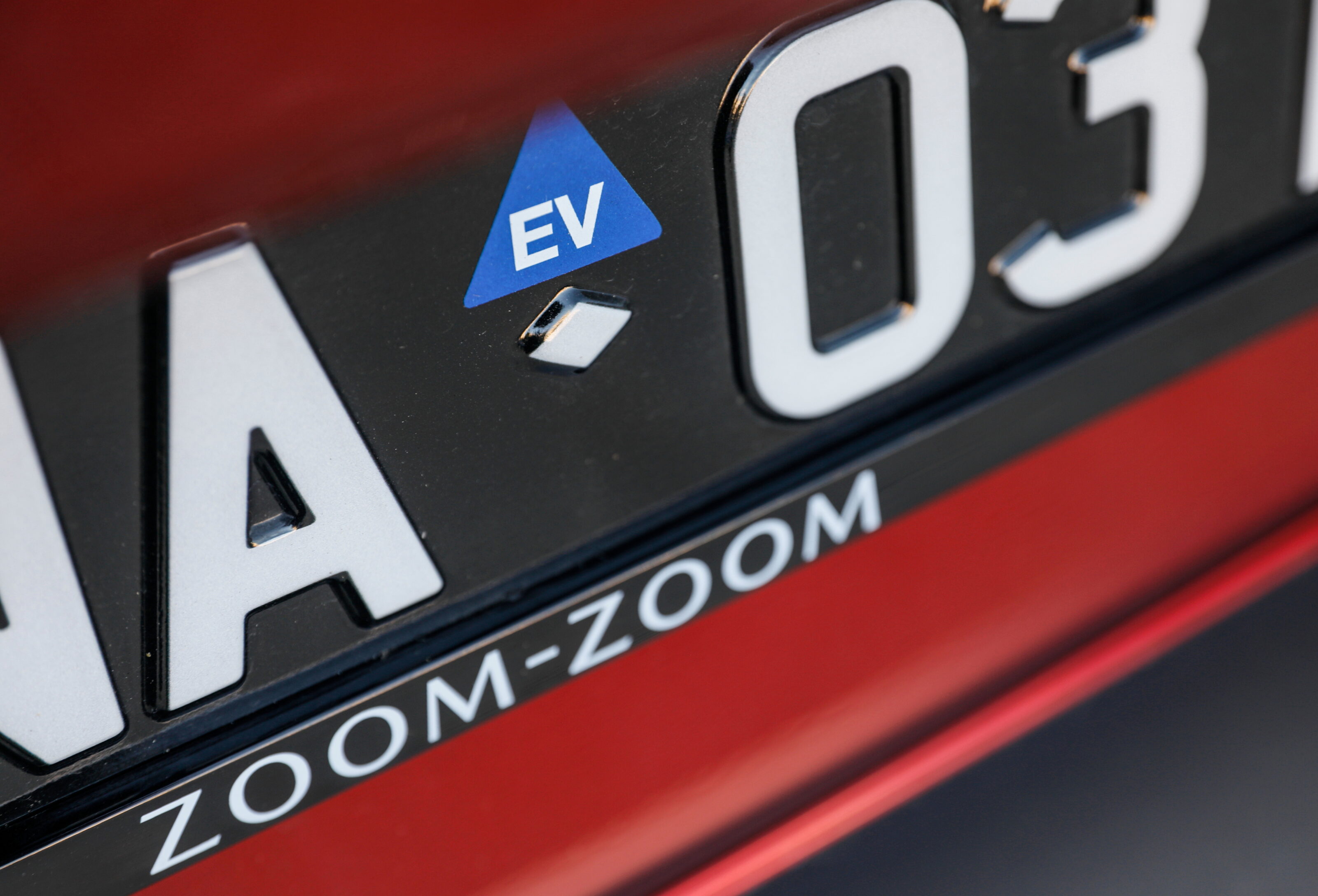
Electric MX-30 aces the urban driving experience, but small range limits its practicality as a weekend tourer
To my mind, an electric car needs to have a motor capable of it moving using battery power alone. I’d argue that Toyota hybrids, which typically have an EV capability of maybe 800 meters at jogging pace, kinda qualify, but only just.
The MX-30’s Skyactiv-G powertrain has no such ability. The 24v system powering the starter/generator unit is claimed to provide a small torque boost in the step-off phase (so small that the quoted 200Nm peak is no different to that of the regular, non-mild-hybrid 2.0-litre engine used elsewhere in the Mazda 3 and CX-30 ranges).
I haven’t driven the MX-30 back-to-back with a CX-30, but I don’t reckon my car feels any perkier in terms of torque response. This is an engine that’s flexible enough, but needs a decent bootful of throttle and ample revs if you want to do anything other than waft around.
The mild-hybrid system is also claimed to aid the stop-start function, allowing longer running of the engine’s ancillaries while the car is switched off at traffic lights. Official evidence of this effectiveness? Well, my MX-30 has a combined ADR consumption of 6.4L/100km, versus 6.5 for the 2.0-litre engine in the front-drive CX-30 line-up.
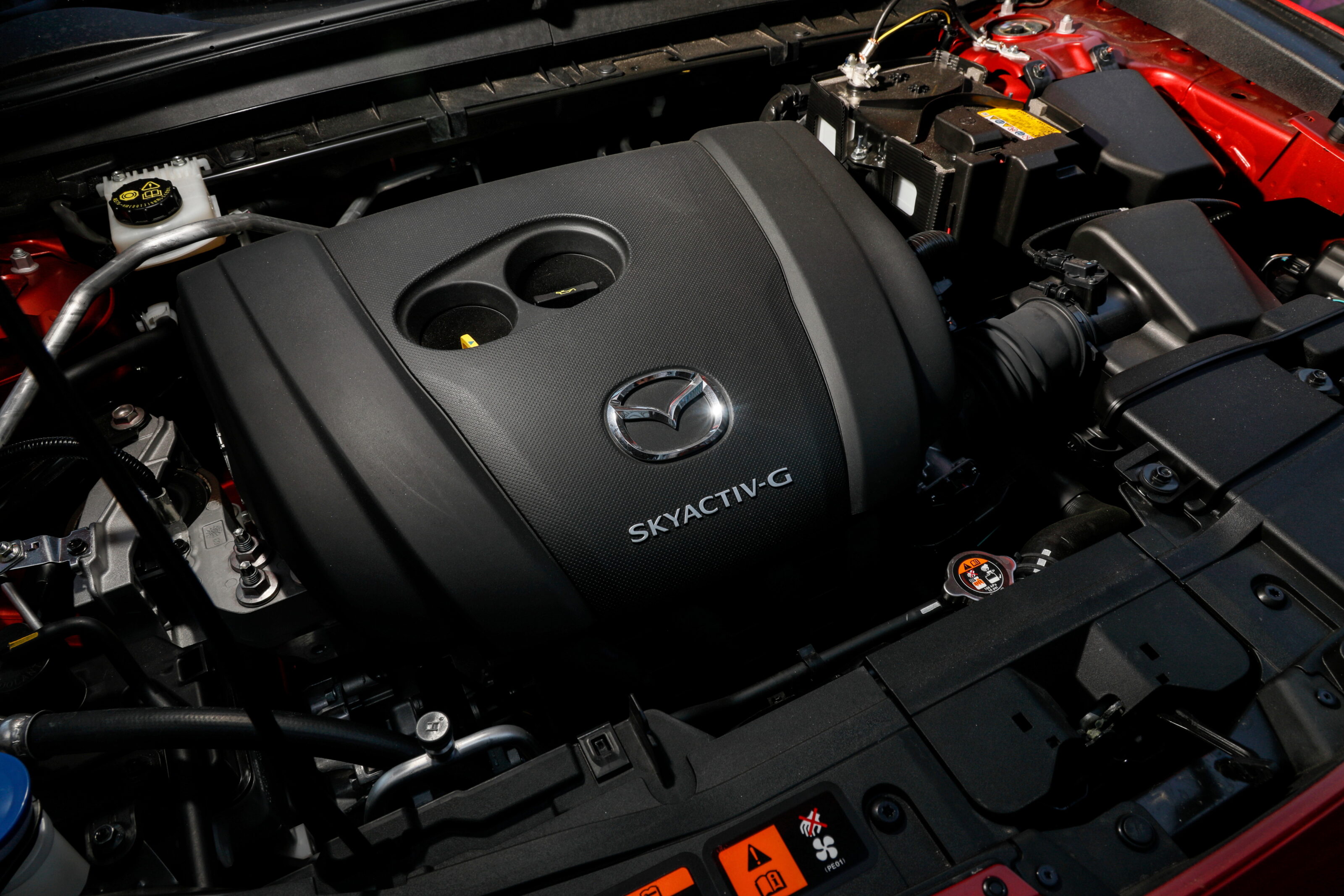
Yes, folks, a saving of 100ml of fuel for every 100km travelled. Hmm. As for keeping the engine off while waiting at lights, the maximum duration I recorded (with air-con and audio system running) was a mere 24 seconds, so way less than the period for which we all sit at most red-light intersections.
Look, I get it; of course car companies have to explore every technology to reduce consumption and emissions. But my experience says that the mild-hybrid approach on the MX-30 is pretty ineffective, as I’m currently burning around 8.6L/100km in mostly urban driving. So in this spec, as I had to explain to my dog-walking friend, the MX-30 sure ain’t no low-emissions EV.
Ah, but it will trade places with one, though. Next month I’ll be running an MX-30 E35 Astina; fundamentally the same car, same equipment, but powered by a single front-mounted electric motor and a small 36kWh battery pack.
This is the car the MX-30 was intended to be all along, and I have a pretty fair idea of how transformational the powertrain switch will be. But there’s a whopping $25K premium for the EV, so the two cars are not remotely in the same price segment.
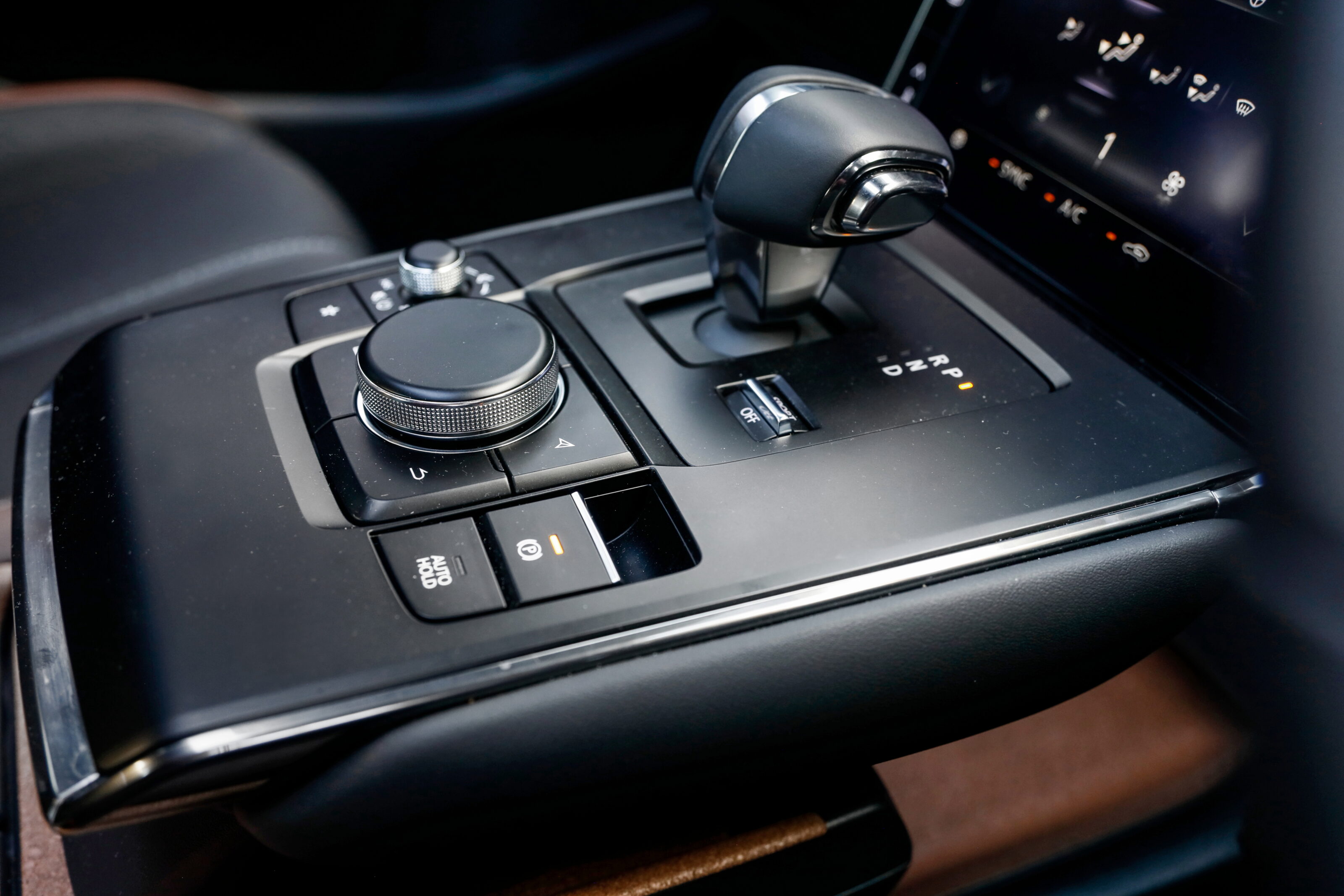
There’s some bold design touches in the cabin, but rear-seat accommodation and amenity aren’t great compared to the cheaper CX-30 on which this car is based
Same rear doors, of course, and while that’s not a big deal for me because I don’t regularly carry anyone in the back, the last couple of months have proved that going ‘freestyle’ really does bring some fundamental practicality issues.
The fact my test car arrived with a very faint crease in the trailing edge of the front passenger door points to the first problem. For anyone unfamiliar with them – kids; your drunk mates – it’s possible to first close the front door, then try and close the rear door, at which point the bulky latch mechanism goes whack into the edge of the front door, as evidenced on my car from a previous user.
Then there’s this scenario: your passenger is still seated and belted in the front, and you open their door to allow the rear door to open. But that rear door houses the seatbelt mechanism for the front occupant, so suddenly your startled passenger is being garrotted by their belt.
Not a great relationship-builder, trust me…
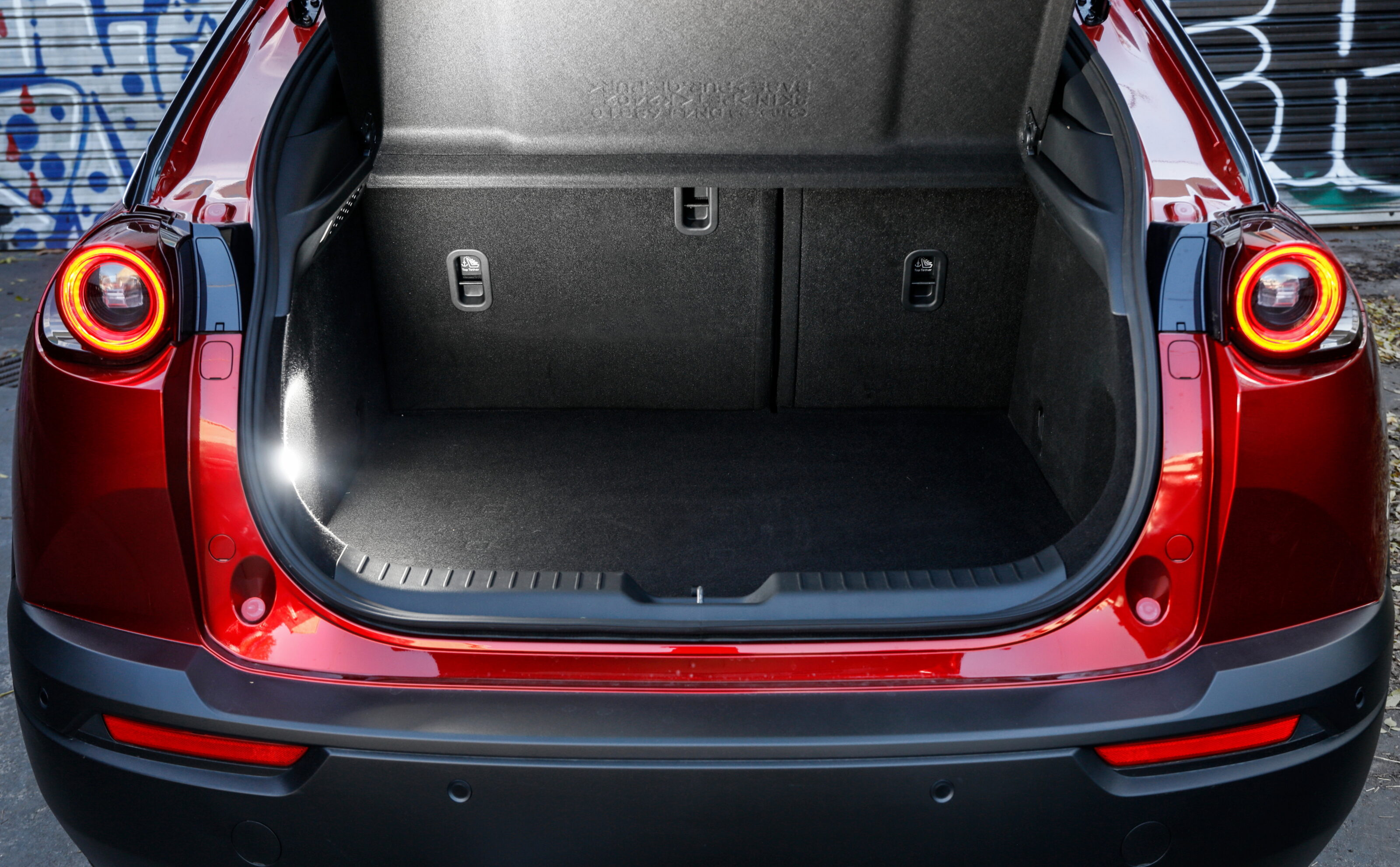
Part 3: Engage low range
Mazda MX-30 E35 (EV)
It’s said that numbers never lie, but sometimes they can deliver a bit of a smokescreen that can cast a veil across reality.
And as dull as number can be – unless you’re an easily excited mathematician – they’re impossible to ignore when explaining the strengths and weaknesses of Mazda’s first production EV.
We’ll deal with the thorny issue of range and recharging in a moment; first, let’s take the electric MX-30’s peak power and 0-100km/h acceleration times as examples.
In isolation, the numbers look limp. The motor makes 107kW, which is actually 7kW down on the max output of the 2.0-litre petrol engine in the red G20e Astina I’ve been in for the last few months, while the quoted 0-100km/h time of 9.7sec sounds like a bit of a snooze fest.
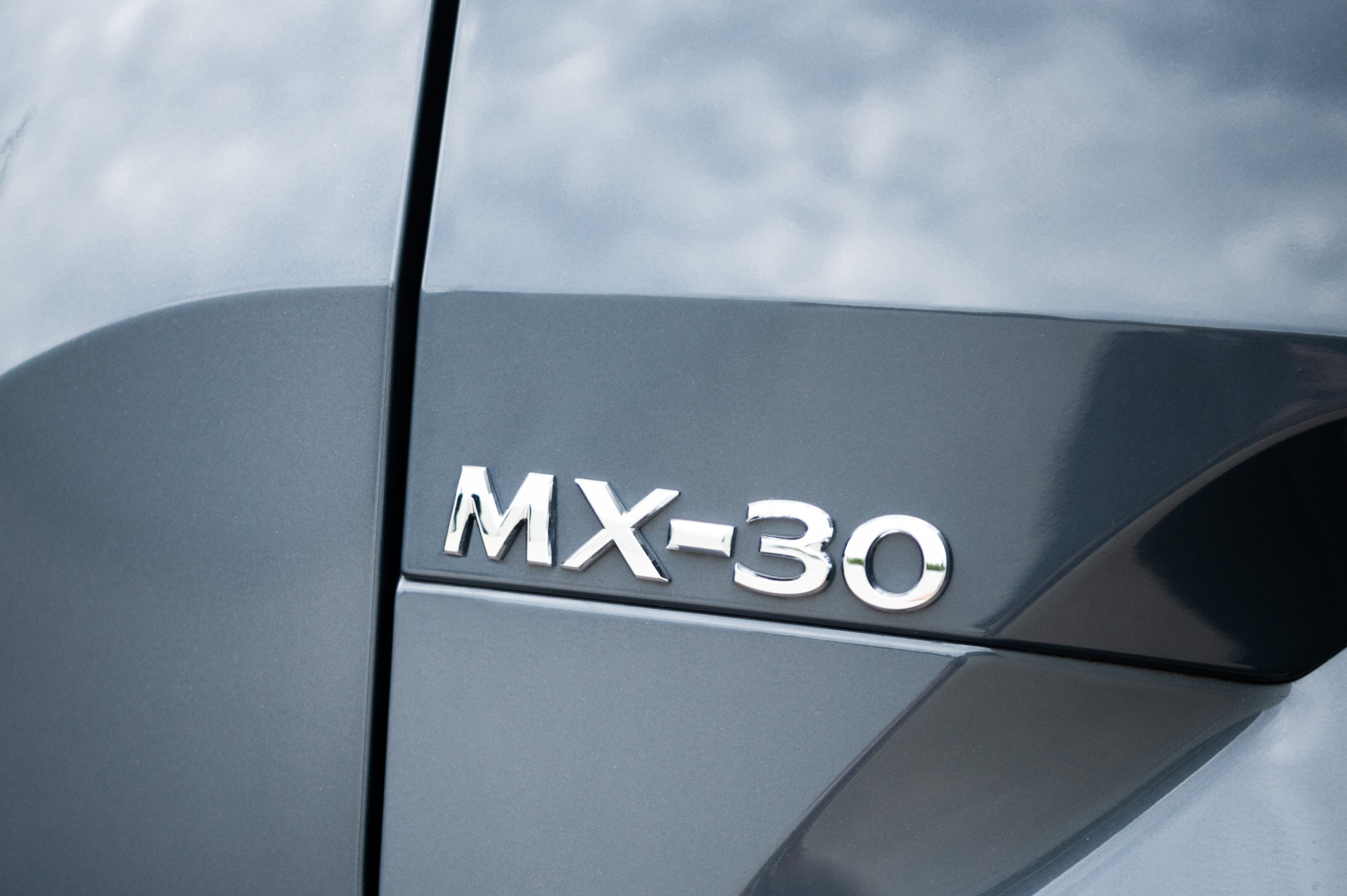
Ah, but this is EV land, where raw numbers often don’t fully illuminate the on-road experience. In the urban environment for which the MX-30 is largely intended, I reckon it actually feels quick enough. Its peak torque of 270Nm is 70Nm up on the ICE car, even if it has an additional 200kg to shift.
That max torque is on tap the moment you’re rolling, so throttle response absolutely smashes the ICE car. And because it’s all so hushed and seamless, you happily throw lots of throttle at it for performance that feels way feistier than that 0-100km/h time would suggest.
No, it doesn’t have that really aggressive, coiled-spring response to the throttle pedal of high-powered EVs, but there’s plenty of punch available if you’re willing to flex the right ankle enough. I actually love driving this car way more than I did the ICE version. The polished, single-ratio drivetrain makes the petrol engine mated to the six-speed auto feel archaic by comparison.
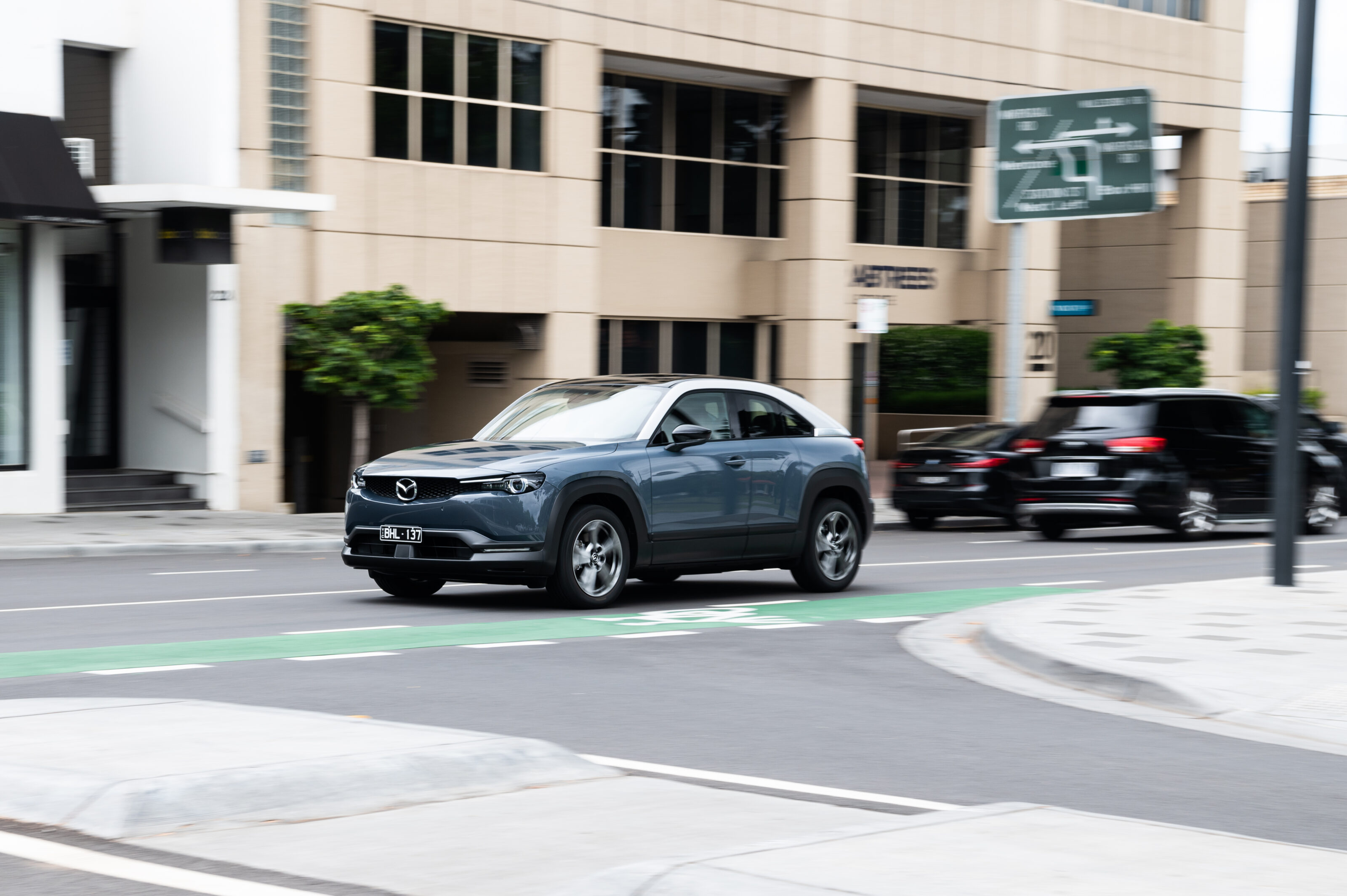
The ‘sound design’ is interesting, too. To help mask the slight whine of the motor, and presumably to ape a more conventional driving experience, Mazda has given the MX-30 a subtle, distant engine sound that rises and falls in direct correlation to application of the throttle. Another reviewer reckoned it sounded like a rotary, but not to my ears it doesn’t.
Maybe partly because the overall powertrain operation is so silken, I’m hearing the ghosts of a BMW V12 lifted from a 7 Series; that distant, ultra-cultured thrum of a strong engine with perfect primary balance using its low-end muscle. Good thing I like it, because it can’t be switched off. But it’s very subtle, and quickly masked by the Bose sound system once the volume is turned up above conversational level.
Then there’s the battery re-gen, which is an intrinsic part of the EV driving experience. It’s also one that I’ve learned is incredibly subjective. Some people love the ‘one-pedal’ driving that strong re-gen provides, allowing them to largely avoid the brake simply by anticipating traffic and letting the motor do the slowing.
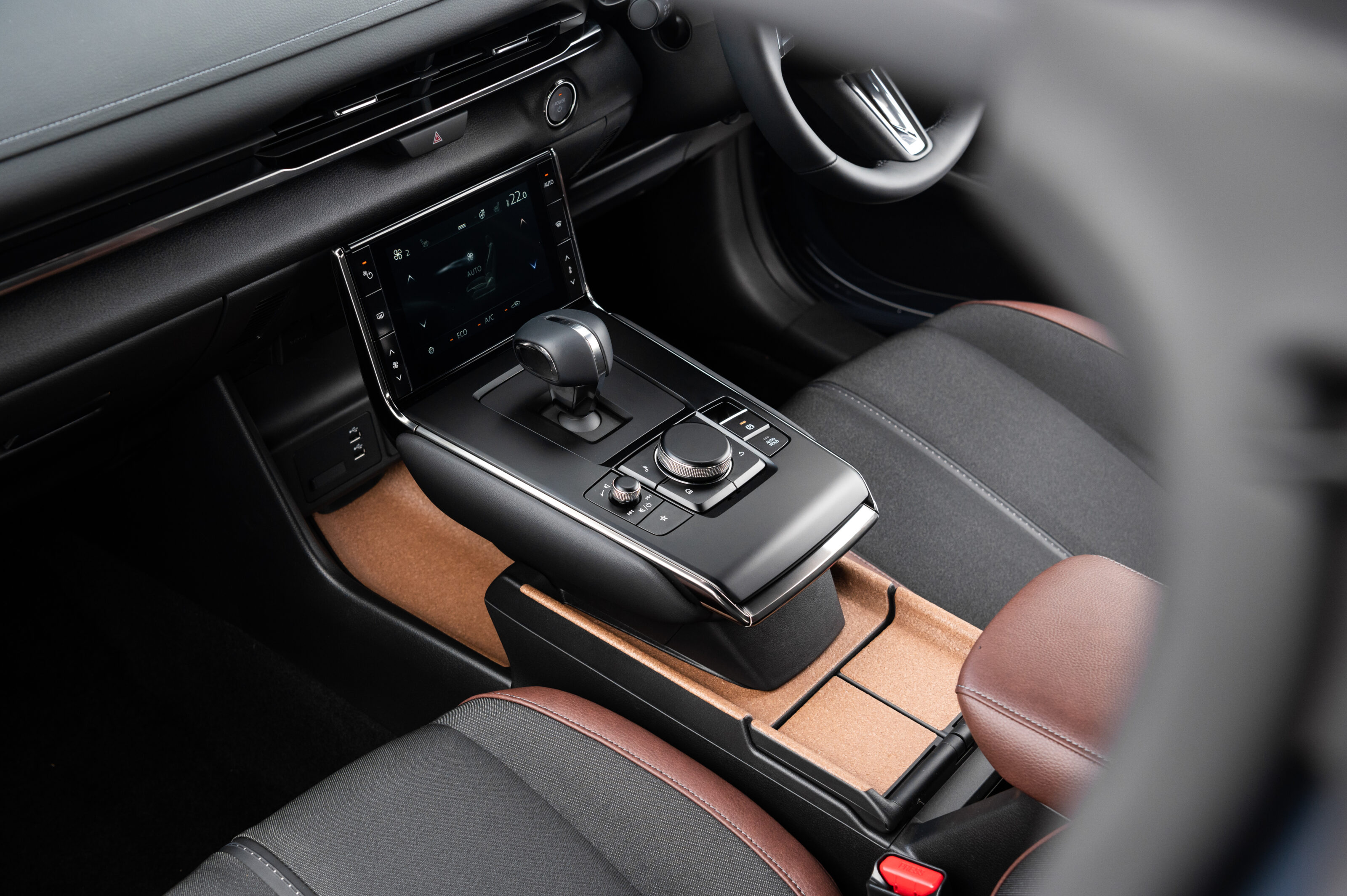
If you’re that type of EV driver, you may be disappointed by the MX-30’s calibration, because even in its strongest mode, it’s not quite enough to keep you off the brakes in stop-start traffic. The default is a mid-strength re-gen setting, with the paddles allowing either two right clicks to (first) loosen the braking effect then pretty much eliminate re-gen altogether, or two left clicks to progressively increase it.
I reckon it’s a near-perfect spread of re-gen choices, and aside from the small but useful addition it makes to the car’s range in urban driving, it really does give you an added level of driver interaction with the car.
On flat terrain, in light traffic, I go for two clicks up of the right paddle (minimal re-gen) to give the powertrain a loping, free-coasting feel that requires barely any throttle pressure to maintain the speed limit. If the road descends, or traffic thickens, I add re-gen via the left paddle to trim speed back.
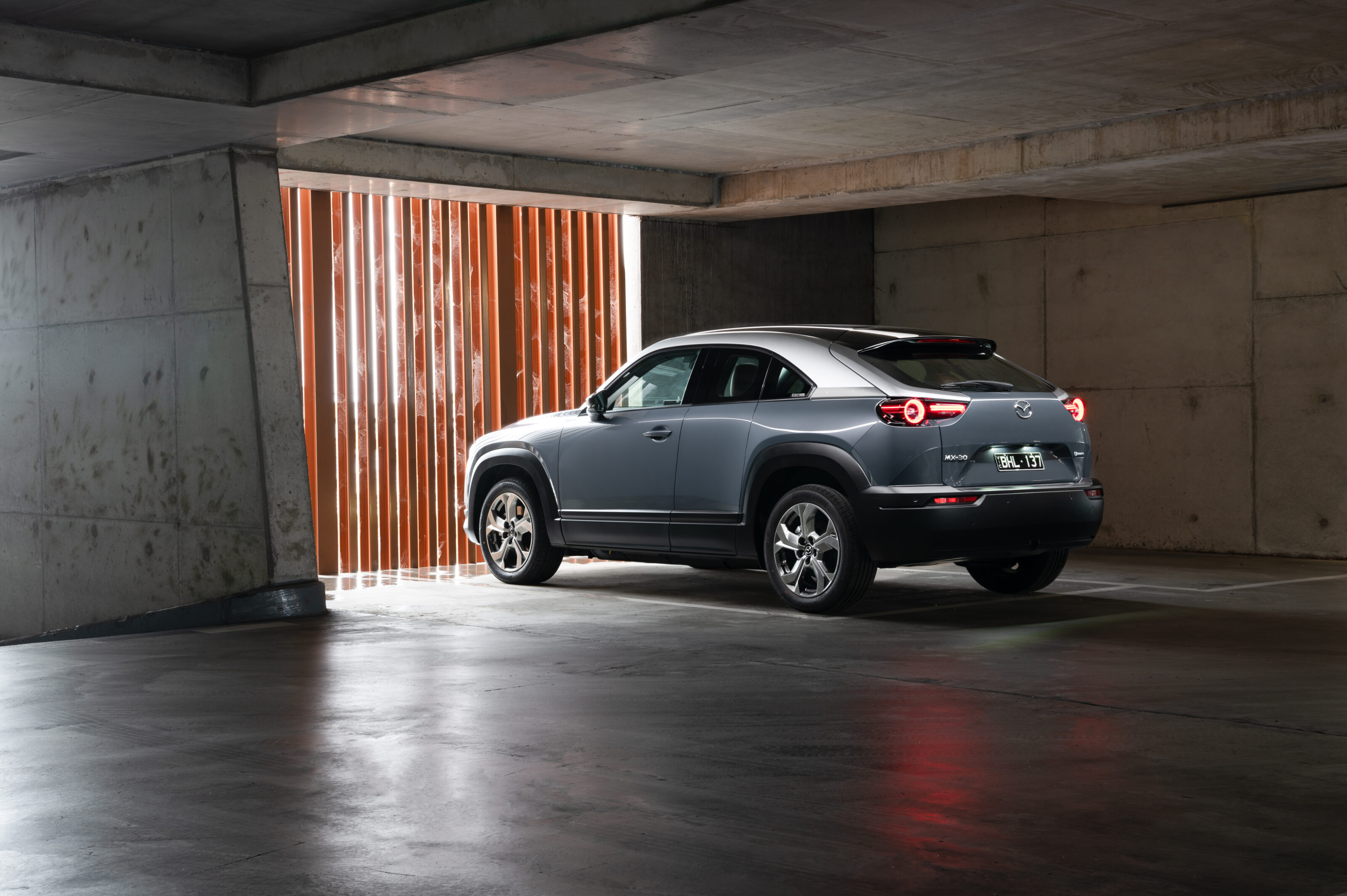
But it’s the tiny range from the 35kWh battery that will be a deal-breaker for many buyers before they even look at the electric MX-30’s price. Initially the display was suggesting 189km from a full charge; now it’s factored in my driving style, typical range is 168km. Weekends away require some planning around recharging. Sydney to Melbourne? I’d say hire a car or find a car-swap buddy.
I’ve been recharging from a regular 240v powerpoint, which takes overnight (around 12 hours) to replenish the battery from 10 to 100 percent. A wallbox would cut this to around five and a half hours.
Which would also add a few grand to the hefty purchase price of $65K, so little wonder I’m yet to a see another MX-30 EV on the road. It’s a great car to drive, just not vast distances.
We recommend
-
 News
NewsNew car calendar 2026: All the new cars coming to Australia next year
Here’s the WhichCar by Wheels guide to all the new cars that will launch in Australia in 2026. Check back in regularly for updates...
-
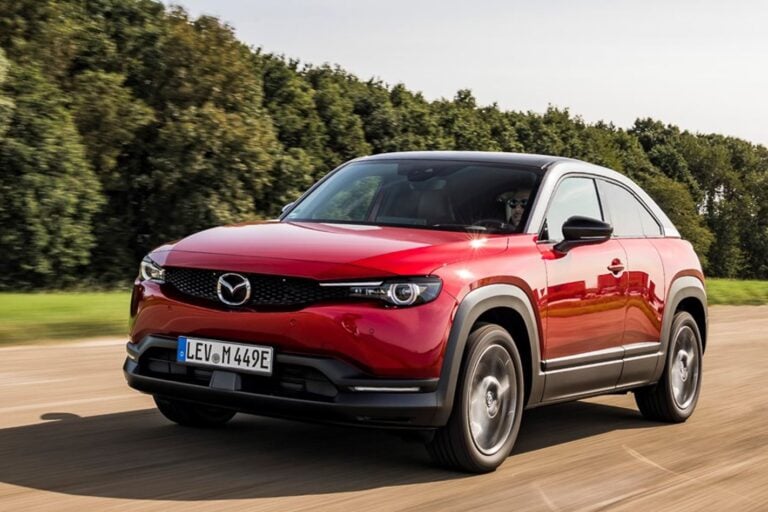 Reviews
Reviews2021 Mazda MX-30 review
The Mazda MX-30 is a very different take on EVs...
-
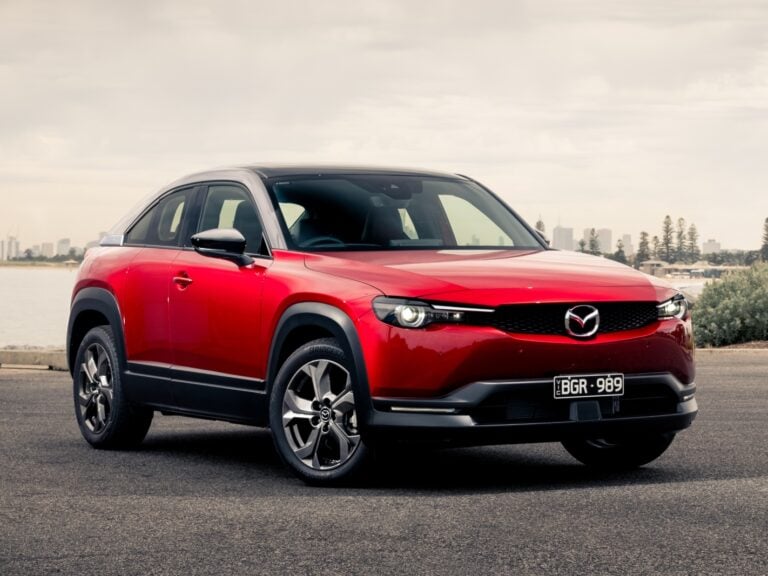 News
NewsMazda MX-30 Hybrid pricing and features
Mazda’s comprehensively equipped MX-30 hybrid paves the way for its first fully electric vehicle


